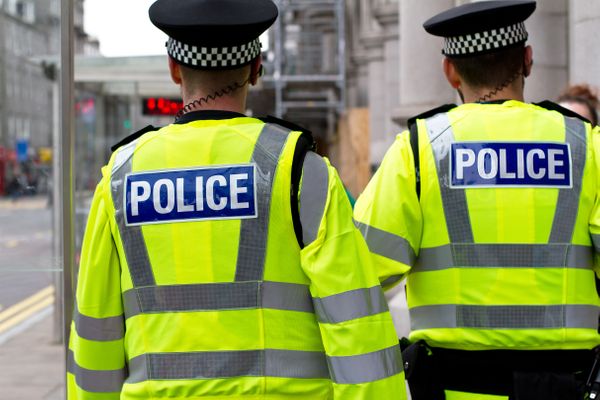5.3.1
The Police Force in Whitechapel
The Police in Whitechapel
The Police in Whitechapel
The Metropolitan Police was established in 1829. Across London, the police were split into different divisions.


Organisation of the Whitechapel police
Organisation of the Whitechapel police
- H Division covered the policing of the Whitechapel area.
- There were around 500 police to cover a population of approximately 176,000 people.
- The City of London police covered the financial district which bordered Whitechapel.
- There was some rivalry between divisions.


The Home Secretary and the Commissioner
The Home Secretary and the Commissioner
- The Metropolitan Police was ultimately controlled by the Home Secretary but the day to day running of the force was down to a commissioner.


Edmund Henderson
Edmund Henderson
- Edmund Henderson held the position of Commissioner from 1870 - 1886.
- He is best remembered for being the man responsible for reducing the standards in the force; namely reducing the amount of military drill and allowing police officers to grow beards.
- However, he was also responsible for increasing literacy standards and furthermore he led the changes to the detective force.


Corruption
Corruption
- In 1878 there was a scandal in the detective force, which had been established in 1842.
- Corruption was a real problem and as a result, Henderson formed a new force which became known as CID - Criminal Investigation Department.


Charles Warren
Charles Warren
- Charles Warren took over in 1886 but the Home Secretary at the time Henry Matthews disliked Warren.
- Warren’s main aim was to raise standards in the police, reversing some of the changes made by Henderson.


Using army techniques in the police
Using army techniques in the police
- Drill was increased and the standards for recruitment were also raised.
- Many worried that the police was becoming more like an army.
The Day to Day Role of an Officer
The Day to Day Role of an Officer
Constables were required to meet certain standards in order to join; they had to wear a uniform and their day was very structured.


The standards to join the police
The standards to join the police
- A recruit needed to be over 21 and under 32.
- Recruits needed to be over 5’9” tall without shoes.
- They must not have more than two children.
- Recruits must also not have any business or trade in addition to police work, nor should their wife have a shop.
- All recruits needed to be able to read and write legibly.
- They must also be physically fit.


Uniform and equipment
Uniform and equipment
- The beat constable would wear deep blue coloured woollen trousers and a jacket.
- Until 1863 they wore a top hat; this was replaced by the traditional helmet, known as the Custodian, as the original top hat offered a constable little protection from injury.
- Officers would carry an oil lamp, handcuffs, a truncheon and a whistle.


The beat
The beat
- Officers would be expected to walk the beat as this was the main tactic the force had to prevent and tackle crime.
- The beat was timed and officers had to patrol a specific area.


Beat routes
Beat routes
- Officers also had to be at particular points along the route at certain times.
- This was the only way the Sergeant would be able to ensure that officers were safe and contactable.
- The beat was varied and routes were changed in order to stop would-be criminals predicting the whereabouts of an officer and committing a crime.
1Medieval England, 1000-1500
1.1Changing Definition of Crime in Medieval England
1.2Nature of Law Enforcement & Punishment
1.3Case Studies From 1000-1500
2Early Modern England, 1500-1700
2.1Changing Definitions of Crime
2.2Nature of Law Enforcement & Punishment
318th & 19th Century Britain
3.1Changing Definition of Crime in Industrial Britain
3.2Nature of Law Enforcement & Punishment
4Modern Britain, 1900-Present
4.1Changing Definition of Crime in Modern Britain
4.2Nature of Law Enforcement & Punishment
5Whitechapel Local Study
5.1The Geographical Area & Living Conditions
5.2The People of Whitechapel
5.3Policing in Whitechapel
5.3.1The Police Force in Whitechapel
5.3.2Jack the Ripper
5.3.3Challenges Facing the Police
5.3.4End of Topic Test - Policing in Whitechapel
5.3.5Grade 9 - Policing Whitechapel
5.3.6Diagnostic Misconceptions - Professional Police
5.3.7Diagnostic Misconceptions - Jack the Ripper
5.3.8Diagnostic Misconceptions - Vigilance Committee
5.3.9Diagnostic Misconceptions - Rundown Whitechapel
Jump to other topics
1Medieval England, 1000-1500
1.1Changing Definition of Crime in Medieval England
1.2Nature of Law Enforcement & Punishment
1.3Case Studies From 1000-1500
2Early Modern England, 1500-1700
2.1Changing Definitions of Crime
2.2Nature of Law Enforcement & Punishment
318th & 19th Century Britain
3.1Changing Definition of Crime in Industrial Britain
3.2Nature of Law Enforcement & Punishment
4Modern Britain, 1900-Present
4.1Changing Definition of Crime in Modern Britain
4.2Nature of Law Enforcement & Punishment
5Whitechapel Local Study
5.1The Geographical Area & Living Conditions
5.2The People of Whitechapel
5.3Policing in Whitechapel
5.3.1The Police Force in Whitechapel
5.3.2Jack the Ripper
5.3.3Challenges Facing the Police
5.3.4End of Topic Test - Policing in Whitechapel
5.3.5Grade 9 - Policing Whitechapel
5.3.6Diagnostic Misconceptions - Professional Police
5.3.7Diagnostic Misconceptions - Jack the Ripper
5.3.8Diagnostic Misconceptions - Vigilance Committee
5.3.9Diagnostic Misconceptions - Rundown Whitechapel
Unlock your full potential with Seneca Premium
Unlimited access to 10,000+ open-ended exam questions
Mini-mock exams based on your study history
Unlock 800+ premium courses & e-books